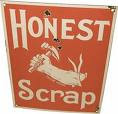So, if you were tackling a major revisions, where would you begin? I'm thinking the first step is to read through my entire MS to get reacquainted with my characters and the story, but after that, I'm not sure what to do. I have to say that the thought of reading my MS without editing as I go is almost impossible, but I'm going to give it a try. It'd be awesome if I could somehow read it on my nook, so that way I couldn't edit it. Hmmmm....
Anyway, what would you do, or what have you done in the past? I'd love to hear your advice and experiences!
This week in books 7/14/17
-
This week! Books!
But first, a programming note. Posts will be a bit sporadic in the next few
weeks as I am headed to San Diego for the wonderment known ...
8 years ago







6 comments:
You know what, I think I can save my MS as a PDF and then use Calibre to transfer it to my Nook!!!! Oh, this could be too cool. Who needs to be published? lol
Shannon W. Messenger has some wonderful posts for revision and other things. I've even printed them for easier access while I'm working. Here's the link:
http://ramblingsofawannabescribe.blogspot.com/search/label/Shannon%20Style
Oh, awesome, a new blog to follow. Thanks Shannon :)
A major revision is daunting, but exciting at the same time!
If you're tackling a structural revision, this is the way I did my last one. It's a little labor intensive, but it's got structure out the wazoo, which I find is incredibly helpful for keeping me from flying into a panic.
First: Go watch Dan Wells' talk on story structure, if you haven't. The video is here, and you can download his powerpoint to follow along here.
Then, what I did for my novel, which was "finished" but had some serious structural issues I didn't have the foggiest idea how to solve, was I wrote down every plot thread that I could think of in the book.
Next, I used Dan Wells' method to build a 7-point system for each plot thread. Many of them, I didn't all seven points -- those were places where I had structural problems, so I worked on making sure that I had the complete chart filled out for every single thread, making sure that each had a solid arc, progression, and conclusion. Being able to work with just one thread at a time really helped keep the panic down because I could focus on just that one, instead of getting overwhelmed by the book as a whole.
Once I had that done, I color coded each thread, printed them out on 3x5 cards, and spent a while crawling around on my living room floor, arranging everything into chronological order, turning my half-a-dozen threads into one long plot.
When I was satisfied with that, I picked the cards up and used them to type up an outline. With that in hand, I went through the book, using the outline to identify scenes that were superfluous to the plot and needed to be gotten rid of, as well as writing new scenes to fill the holes in my first draft. Although it takes a fair bit of work beforehand, I've found it so incredibly helpful, because it takes away the panic of "oh my god, I don't know how to fix this". Using Dan Wells' structure helps me to identify exactly where the problems are and how to fix them, and having the whole thing outlined beforehand means that once I'm actually working on the book, I only have to focus on the scene in front of me, instead of getting pulled a million different directions by a hundred different scenes that all need to be fixed.
Anyway, I don't know if this is the sort of revision you're facing, but it's how I tackled my toughest revision yet and came through it with my sanity intact! *grin*
Oh wow, thanks for the post Aislinn. I used First Draft in 30 Days to write my first draft, and the process is very similar. I loved having a solid outline to write off of, it made the process relatively easy. Of course, now that I want to kill off a main character in the first chapter, my outline is moot. I wonder if I can adapt Dan's process for my revision? It's like, "If I change this, what else changes?" Oh, yeah, everything. Crud.
Funny enough, I actually don't much like writing to an outline -- I'm definitely a pantser. But pantsing tends to result in a messy first draft, and having an outline to work from makes cleaning that mess up so much less overwhelming, for me.
Ouch, killing a character -- that's definitely a big change! I still think that working through one thread at a time could probably be a less-overwhelming way of tackling it. Here's an example of how I do the threads, with a different book I used this method on: http://grab.by/acDB
I would probably start with the thread that the character's death is going to have the biggest impact on and work that one out, then move on to the others one-by-one.
Good luck! :)
Post a Comment